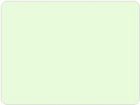Why not use SAISIR ?
SAISIR is probably not the best choice if the set of data to be analysed is very small, if the chemometric methods to be used are very standard, or if a software, specific to the user's application gives a total satisfaction.
SAISIR uses a very simple data structure in which any set of data can be easily shaped. It is also very simple to write and add procedures which would be missing in the MATLAB®, SCILAB® and OCTAVE® environment. Large set of data (up to several millions of numbers) can be easily manipulated through SAISIR.
An important feature of SAISIR is that the observations and the variables have names (identifiers) which always follow the data processing. This approach both improves the security in the data manipulation and makes it possible to have immediately relevant graphic displays.
In its current format, SAISIR includes about two hundred functions, from early data manipulation to advanced data processing. It has been applied to a large number of very wide-ranging set of practical applications.
Consult saisir_documentation to have a first glance on the functions in SAISIR.
-- Official Website
version 07/01/2009
A comprehensive package for chemometrics in the MATLAB, SCILAB or OCTAVE environments.
Why use SAISIR ?
SAISIR is a package of command-line functions written for MATLAB®, SCILAB® and OCTAVE® which can be used for research and routine works in chemometrics. It makes it possible in a sufficiently simple way to experiment all the most usual domain of chemometrics (principal component analysis (PCA) and related methods, multiblock methods, regressions, discrimination, Partial least square (PLS), clustering ...). It is also useful for the users who want to compare the efficiency of well known or new methods in chemometrics. SAISIR is equally a valuable tool for students who want to learn chemometrics and understand the most basic algorithms.
Contrary to windowed environments, it has the great advantage to allow batch procedures. It also makes it possible to mix data of any origin (chemical and physical data, spectroscopic data, numeric images ...). Due to its simple way of working, it is always possible to find a practical solution, and the user is never at complete standstill.






Contacts





Statistics Applied to the Interpretation of Spectra in the InfraRed

Vous êtes le ième visiteurs
Dernière mise à jour : 07/10/2016